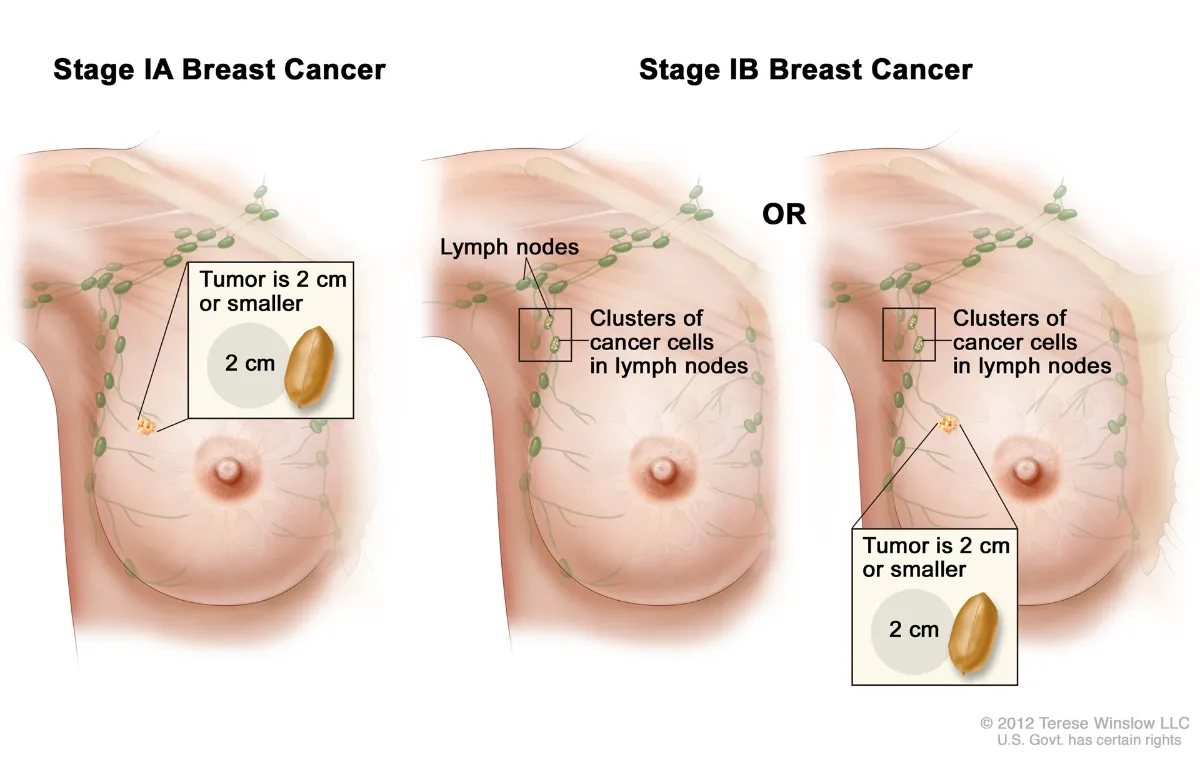When breast cancer is diagnosed, doctors stage it to ascertain the best course of therapy, forecast your prognosis, and estimate the likelihood of a cure.
Staging is the process of determining the degree and features of breast cancer after a diagnosis.
A breast cancer tumor’s size, location, and whether or not cancer cells have migrated to your lymph nodes or other parts of your body are just a few of the many variables that go into the complicated process of breast cancer staging.
This page gives a summary of each stage of breast cancer and explains how doctors decide on staging.
What is breast cancer in stage 0?
A noninvasive breast cancer known as ductal carcinoma in situ is referred to as stage 0 breast cancer. Cancerous cells are present in your breast’s ducts at this stage, but they haven’t spread to the breast tissue yet.
How is the stage of breast cancer decided?
The American Joint Committee on Cancer’s staging method is the most widely used for breast cancer, according to the American Cancer Society (ACS)Trusted Source. This is also known as the TNM system, where:
T stands for the tumor’s size.
N denotes whether adjacent lymph nodes have been affected by the malignancy.
M indicates if the malignancy has migrated to other organs or farther-flung lymph nodes.
This approach was revised in 2018 to incorporate additional variables known as biomarkers into the staging of breast cancer. These consist of:
the hormone receptor and HER2 status of the cancer
the cancer’s grade, or how the malignancy looks in relation to normal breast tissue
the Oncotype DX of the cancer, a gene expression test that forecasts the probability of breast cancer metastasizing to another part of the body
Your cancer will be given an overall stage following the evaluation of all the previously mentioned characteristics. Breast cancer has five stages, which are denoted by the numbers 0 through 4.
A note on the signs and symptoms of breast cancer
Regardless of the illness’s stage, each person’s experience with breast cancer might differ significantly. While some people may have visible breast changes, others may not exhibit any symptoms at all.
A painless breast lump is the most typical sign of breast cancer, according to the ACSTrusted Source. Additional signs of breast cancer could be:
breast or nipple soreness, enlarged lymph nodes, particularly behind your arms or close to your collarbone
Breast swelling, especially if it only affects a portion of your breast, can include skin changes like:
redness that thickens and dimpling
either flakiness or scaliness
a nipple that curls inward with a discharge that could contain blood
Stage 2 breast cancer: what is it?
Similar to stage 1 breast cancer, there are two subtypes of stage 2 breast cancer. Stages 2A and 2B are these.
Phase 2A
It’s conceivable that no breast cancers are discovered at stage 2A. If a tumor is discovered, it is smaller than 2 cm. Additionally, up to three lymph nodes beneath your arm or close to your breastbone have been affected by the cancer.
A stage IIA tumor can occasionally be larger, ranging from 2 to 5 cm. But in this case, the cancer hasn’t yet reached neighboring lymph nodes.
Phase 2B
Breast cancers in stage 2B can range in size from 2 to 5 cm. In this instance, the cancer may have progressed to up to three lymph nodes beneath your arm or close to your breastbone, or it may have been detected in neighboring lymph nodes in small clusters.
The size of some stage 2B breast cancers might exceed 5 cm. These tumors haven’t yet reached neighboring lymph nodes, though.
Stage 1 breast cancer: what is it?
The initial stage of invasive breast cancer is known as stage 1. At this point, cancer cells have started to infiltrate non-cancerous breast tissue from their original site.
There are two subtypes of stage 1 breast cancer. They are referred to as 1A and 1B.
Phase 1A
Cancers in stage 1A are no more than 2 cm and have not migrated to neighboring lymph nodes or outside of the breast.
phase 2A
Your breast may not have a discernible tumor if your cancer is stage 1B. If there is a tumor, it is no larger than 2 cm. Small clusters of cancer cells can also be discovered in neighboring lymph nodes by a physician.
What is breast cancer in stage four?
When breast cancer reaches stage 4, it has progressed to more distant lymph nodes and tissues in addition to your breast and neighboring lymph nodes. Another name for this kind of cancer is metastatic breast cancer.
Breast cancer most frequently spreads to the following parts of the body, per the National Cancer Institute (NCI) Trusted Source:
brain, liver, lung, and bones
According to a 2017 study (Trusted Source) of patients with stage 4 breast cancer, the most frequent site of metastasis was the bones, where 65.1% of study participants saw cancer spread.
The next most frequent sites were the brain (8.8%), liver (26%), and lungs (31.4%). Furthermore, breast cancer that had progressed to other locations affected 33.5% of research participants.
The location of the cancer’s spread may affect the symptoms of metastatic breast cancer. Nonetheless, the following are some typical signs of metastatic cancer:
weariness, weakness, inadvertent weight loss, and discomfort at or near the metastatic site

